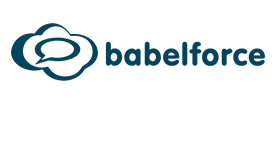Many call centre BPOs are lagging when it comes to adopting AI and automation. The reason is simple: their financial incentives are aligned to agent seats, not outcomes. But if that doesn’t change soon, BPOs will face an uncertain future.
Imagine this: you go to a restaurant and notice that they employ a huge number of waiters. Too many waiters. Waiters are everywhere. But somehow, nobody is getting their food.
The maitre’d explains it to you: “we’re evaluated on how many people we employ, not how much food we serve.”
That’s clearly bizarre, but it’s the situation BPOs find themselves in. The unit they’re selling is the agent minute. And it’s threatening to kill their entire business model.
The BPO Model Is Fatally Flawed
I sell software to contact centers for a living. My clients want to use automation to provide faster, more effective, more affordable service. And that’s what I help them to do.
But BPOs are far more reluctant tech adopters. In fact, I regularly pitch to BPO leaders who have been *dragged* to the meeting by their own clients.
The client is keen.
Their BPO is hesitant.
What we have is a classic case of misaligned incentives.
So let’s look at why, and how, BPOs can future-proof themselves.
2 Reasons BPOs Must Adapt
Automation Is Low-Hanging Fruit
The timescale for deploying sophisticated automation – especially VoiceBot AI – has trended downwards for years. Two months or less is reasonable to have a VoiceBot solution in place that replaces (and exceeds) existing DTMF systems.
In other words, it’s out with the old and in with the new. So if it’s easy to deploy automation, and it benefits the customer experience, many businesses will ask: why isn’t our BPO doing this?
Those businesses are starting to put real pressure on their BPOs.
- 86% of consumers are intrigued by AI service tools and will try them out
- More than one third of consumers prefer using a self-service option
- VoiceBot AI deployments commonly add automation to 80% calls
There’s a BPO Arms Race
BPOs have been trying to outperform one another since the invention of the call center. Offshoring has been the go-to for cost-sensitive businesses. But, as one analyst recently said to me: “we’re not going to find another Philippines.”
That static pool of offshore workers is one problem. Another problem is that some territories’ local languages are not widely spoken globally. (As a German myself, I encounter this a lot.) These businesses urgently need a way to control costs without further reliance on offshoring.
- Staffing shortages are a significant challenge for BPOs, with an average annual attrition rate of 30-35% in the industry.
- The cost of hiring in a typical European call center increased between 5 and 10% in 2022
- More than 75% of EU companies are struggling to fill vacancies
3 Steps to Save BPOs
1) Align the Greed
BPOs should be hyper-motivated to automate. For one thing, the potential margins for selling automated services are huge. For another, automating service cuts the impact of staff churn, training costs, and seasonal fluctuations.
- Up to 95% of call center costs are associated with staffing
- The typical cost per agent-led call is £6.26. Per automated interaction it’s less than £1.00
BPOs and their clients are not being motivated by the same factors, but that’s an easy fix. Instead of focusing on the cost of an agent minute, BPOs need to look at what matters: outcomes.
How many contacts can you handle successfully? What do sentiment metrics reveal about your service? What speed of resolution do you offer and how does your FCR compare?
These are the questions that really matter for customer service. But existing financial dynamics make it hard for BPOs to engage with them. At the very least, BPOs need to broaden their pricing models to include consumption on automation tools like VoiceBots.
Flipping the script this way opens the door for automation efficiencies – and that’s where the money is.
2) Ditch Headcount as a Focus for Managers
Next, a cultural challenge. We all know that “having more people under you” is often what signifies success in management.
But it’s like the restaurant full of waiters and hungry customers; it’s focused on the wrong thing.
Just as BPOs should focus on CX outcomes, managers need to be valued on the quality of their output – not the number of people they lead. This is sound as a general rule of thumb. For BPOs it should be fundamental.
Research from Gallup highlights 5 innate tendencies of successful managers:
- Motivation: Inspiring teams to get exceptional work done
- Workstyle: Setting goals and arranging resources for the team to excel
- Initiation: Influencing others to act; pushing through adversity and resistance
- Collaboration: Building committed teams with deep bonds
- Thought process: Taking an analytical approach to strategy and decision-making
You’ll notice that “feeling important by managing a lot of people” is not on this list.
3) Make CX Design a Core Function
Now for the real work. For a BPO embracing automation and outcome-based KPIs, the game changes significantly.
You’re fully aligned with your clients to provide fast and effective service. Managing those services, bringing automation to existing business processes – that’s a full-time job. This has been a roadblock for BPOs, as they’ve struggled to orchestrate meaningful change at speed.
The emergence of composability in CX solutions offers a quick win here. “Composable” solutions shrink the gap between designing a process and implementing it.
That’s possible because these tools are more intuitive, with visual UIs that can build complex workflows regardless of tech skill. In other words, if you can draw your desired process on a whiteboard, you can build it with a composable solution.
Gartner calls composability “the future of business” and highlights four key benefits:
- More speed through discovery
- Greater agility through modularity
- Better leadership through orchestration
- Resilience through autonomy
This is the final missing piece for businesses that need to change fast: the tools to apply their CX expertise at pace.

Julian Hertzog
There’s no doubting it – BPOs with automation in their DNA are going to dominate the next decade. The rest are going to find themselves with a lot of waiters and nobody to serve.
Written by: Julian Hertzog, Head of Sales, babelforce.
For more information about babelforce - visit the babelforce Website
Call Centre Helper is not responsible for the content of these guest blog posts. The opinions expressed in this article are those of the author, and do not necessarily reflect those of Call Centre Helper.
Author: babelforce
Published On: 30th Jan 2024 - Last modified: 6th Dec 2024
Read more about - Guest Blogs, babelforce, Julian Hertzog






 babelforce is the composable customer experience platform uniting agents and automation.
Our platform gives you the power to create the customer experiences you’ve always wanted, with tools anyone can use.
babelforce is the composable customer experience platform uniting agents and automation.
Our platform gives you the power to create the customer experiences you’ve always wanted, with tools anyone can use. 








